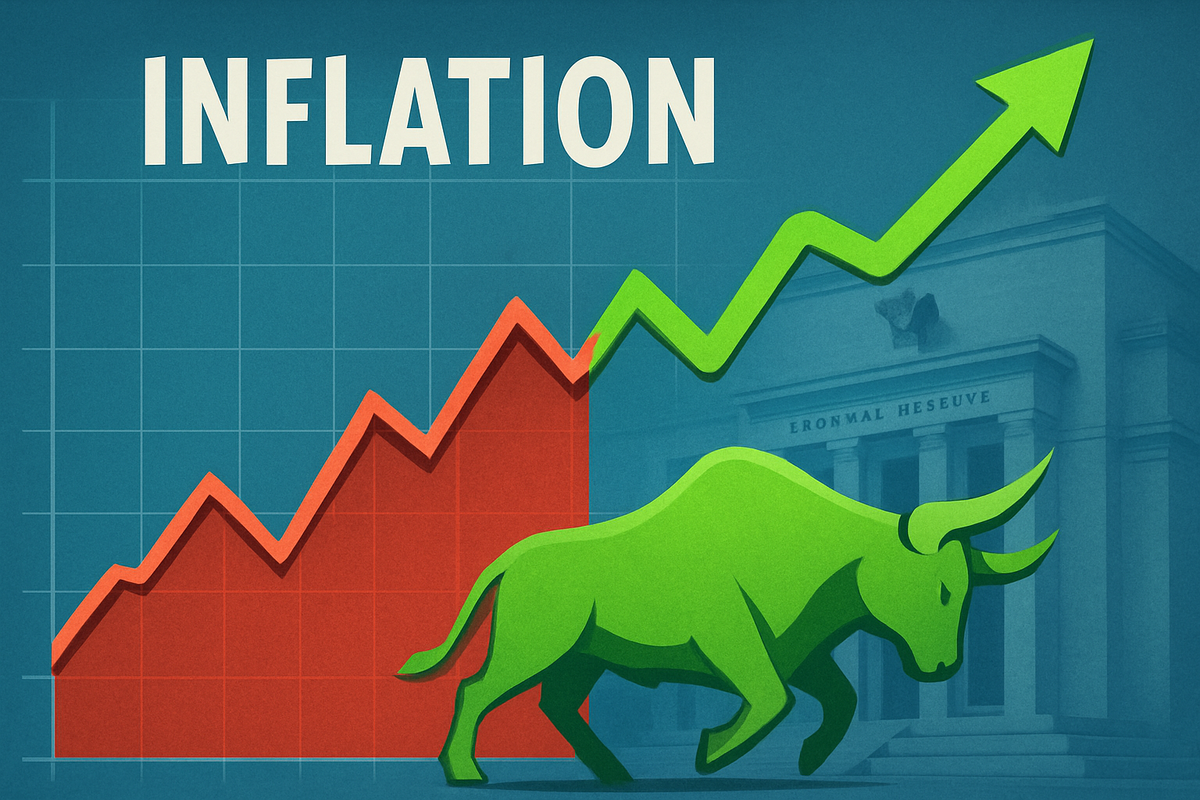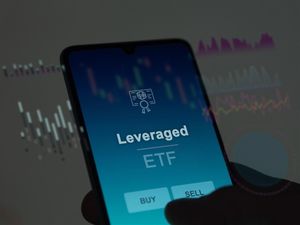
The September 2025 Consumer Price Index (CPI) report, released today, October 24, 2025, indicated that inflation edged higher but came in "cooler-than-expected," providing a significant boost to financial markets and solidifying expectations for Federal Reserve interest rate cuts. The report, which was delayed due to a government shutdown, revealed a modest increase in the headline inflation rate while core inflation metrics surprised to the downside, sparking a wave of optimism across global financial markets.
This unexpected turn in inflation data has swiftly recalibrated investor sentiment, shifting focus from persistent inflationary pressures to the potential for a more accommodative monetary policy. The prospect of lower interest rates has ignited a broad market rally, with key indices reaching new highs and bolstering hopes for sustained economic growth in the coming months.
September's CPI: A Nuanced Picture of Easing Pressures
The latest CPI report painted a nuanced picture of the ongoing inflation battle. The all-items CPI rose 3.0% on a year-over-year basis in September, a slight increase from 2.9% in August, but notably below economists' forecasts of 3.1%. On a monthly, seasonally adjusted basis, the CPI increased 0.3%, decelerating from a 0.4% rise in August and also falling below the consensus forecast of 0.4%. Gasoline prices were identified as a primary driver of the headline increase, rising 4.1% month-over-month and contributing significantly to the overall monthly CPI surge, alongside the lingering impact of tariffs.
Even more encouraging for market participants was the core CPI, which meticulously strips out volatile food and energy prices to provide a clearer underlying inflation trend. Core CPI increased 3.0% year-over-year, a slight decline from 3.1% in August and lower than the projected 3.1%. The month-over-month core CPI rose 0.2%, a slower pace than the 0.3% increases observed in July and August, and also below market predictions of 0.3%. This "cooler-than-expected" core inflation figure was the primary catalyst for the market's enthusiastic response, signaling that underlying price pressures might be moderating more quickly than previously thought.
The timeline leading up to this report has been marked by a period of persistent, albeit moderating, inflation, following a peak earlier in the year. The Federal Reserve, under Chairman Jerome Powell, has been navigating a delicate balance between taming inflation and supporting a resilient, yet recently softening, labor market. Key players involved in interpreting and reacting to this data include economists from various financial institutions, policymakers at the Federal Reserve, and, of course, millions of investors and traders globally. The delay in the report's release due to a government shutdown added a layer of anticipation, making its eventual publication even more impactful.
Initial market reactions were overwhelmingly positive. US stock markets experienced a significant rally, with major indices like the S&P 500 hitting new record highs. This surge was fueled by optimism that the Federal Reserve would adopt a less aggressive stance on interest rate hikes, or even proceed with rate cuts. Technology and growth-oriented stocks were particularly strong beneficiaries of this sentiment. Yields on Treasury securities dropped across the curve, reflecting diminished inflation concerns and reinforcing expectations for future Fed rate cuts. Concurrently, the U.S. Dollar index fell, as the lower-than-expected inflation figures bolstered the case for an imminent easing of monetary policy, injecting a wave of optimism that the era of restrictive monetary policy might be drawing to a close.
Companies Poised to Win or Face Headwinds Amidst Rate Cut Hopes
The "cooler-than-expected" September CPI report and the subsequent bolstering of Federal Reserve interest rate cut expectations are set to create distinct winners and losers across various market sectors. Lower interest rates generally reduce borrowing costs for consumers and businesses, stimulating spending, investment, and ultimately, corporate profits.
The Technology Sector is poised to be a significant beneficiary. Growth-oriented tech companies thrive in a low-interest-rate environment as reduced borrowing costs decrease the cost of capital, thereby increasing the present value of future cash flows and boosting company valuations. This also facilitates easier access to funding for research and development, expansion initiatives, and strategic mergers and acquisitions (M&A). Established giants such as Apple (NASDAQ: AAPL), Microsoft (NASDAQ: MSFT), Alphabet (NASDAQ: GOOGL), and Amazon (NASDAQ: AMZN) stand to benefit from cheaper financing for large-scale projects and AI investments. Fintech innovators like Block (NYSE: SQ), PayPal (NASDAQ: PYPL), Fiserv (NYSE: FI), and Robinhood Markets (NASDAQ: HOOD) could see improved margins and increased transaction volumes. Semiconductor firms like Broadcom (NASDAQ: AVGO) will find it more cost-effective to invest in crucial R&D.
The Consumer Discretionary Sector is also expected to flourish. This sector is highly sensitive to consumer spending power, which typically increases when borrowing costs for credit cards and auto loans decrease. Retailers and e-commerce giants, including Amazon (NASDAQ: AMZN) and Target Corporation (NYSE: TGT), could experience a surge in demand. Travel and leisure companies, such as Royal Caribbean Cruises Ltd. (NYSE: RCL), may see increased bookings. Brands like Crocs, Inc. (NASDAQ: CROX), Mohawk Industries, Inc. (NYSE: MHK), Tapestry Inc. (NYSE: TPR), DoorDash Inc. (NASDAQ: DASH), Tesla Inc. (NASDAQ: TSLA), and Ralph Lauren Corp. (NYSE: RL) have historically performed well in such environments, benefiting from renewed consumer confidence and spending.
The Financials Sector, however, faces a more mixed outlook. While lower rates can stimulate demand for loans (mortgages, auto, business) and potentially increase lending volumes, a primary concern for traditional banks is the potential for compressed net interest margins (NIMs). If deposit rates don't fall as quickly as lending rates, profitability can be negatively impacted. Fintech companies, such as SoFi Technologies (NASDAQ: SOFI), Affirm Holdings (NASDAQ: AFRM), Marqeta (NASDAQ: MQ), and Dave (NASDAQ: DAVE), may benefit from increased loan demand and potentially more favorable lending terms. Investment banks like Goldman Sachs (NYSE: GS) could see higher fees from stimulated capital markets activity. However, large, traditional banks heavily reliant on net interest income might face headwinds from tightening NIMs.
Finally, the Real Estate Sector is highly sensitive to interest rates and generally benefits significantly from cuts. Lower rates directly translate to reduced mortgage rates, making homeownership more affordable and stimulating buyer demand, which can lead to capital appreciation. For Real Estate Investment Trusts (REITs), lower borrowing costs make it cheaper to finance property acquisitions and developments. Homebuilders like D.R. Horton (NYSE: DHI), Lennar Corporation (NYSE: LEN), and PulteGroup (NYSE: PHM) are expected to see increased sales and improved profitability. Industrial REITs like Prologis (NYSE: PLD) and retail REITs such as Simon Property Group (NYSE: SPG) could benefit from reduced debt servicing costs and renewed investor interest. Real estate technology platforms like Zillow (NASDAQ: ZG) also stand to gain from increased transaction volumes.
Broader Economic Implications and Global Ripple Effects
The "cooler-than-expected" September 2025 CPI report extends its influence far beyond immediate market reactions, resonating through broader economic trends, global inflation outlooks, and policy considerations for central banks worldwide. This moderation in U.S. inflation provides a crucial signal to global markets, suggesting a potential easing of worldwide inflationary pressures, although regional variations will persist due to diverse supply chain dynamics, energy prices, and fiscal policies.
The report highlights a complex interplay within global supply chains. While some goods inflation, particularly for necessities and items affected by tariffs, contributed to softer demand elsewhere, tariffs themselves remain a significant factor pushing prices higher. President Trump's tariff policies are noted as a primary force, with companies absorbing a portion of these import taxes but still passing on increases in new vehicles, furniture, appliances, and apparel. Persistent global supply chain disruptions, geopolitical tensions, and trade barriers continue to exert pressure on commodity markets and increase shipping costs, contributing to higher prices for raw materials and finished goods. Specific commodities, like coffee and beef, have seen substantial year-over-year price increases due to adverse weather and demand shifts.
Consumer spending patterns are also under scrutiny. The University of Michigan's Consumer Sentiment Index edged down in October, reflecting a degree of wariness among Americans despite the "cooler" inflation news. While near-term inflation expectations improved slightly, long-run expectations grew gloomier, ticking up to 3.9%. Consumers remain "frustrated by the persistence of high prices," with a significant portion reporting a worsening of personal finances. This dip in confidence suggests that consumers may become more conservative with major purchases, potentially dampening economic growth and corporate earnings, but also alleviating some inflationary pressures. Cautious spending, particularly among middle and lower-income families, could become a defining characteristic in the coming months.
From a regulatory and policy perspective, the September CPI report significantly strengthens the case for continued monetary policy easing by the Federal Reserve. With inflation showing signs of moderating, the Fed gains more flexibility to prioritize its dual mandate of maximum employment, especially given recent concerns about a softening labor market. Analysts now widely anticipate a 25-basis-point rate cut at the upcoming October FOMC meeting, with further cuts possible in December and early 2026. The ongoing government shutdown, which delayed the report's release, underscored the critical reliance of policymakers on timely economic indicators, posing challenges for the Fed's "data-dependent" approach. Other central banks are responding based on their domestic conditions, with the European Central Bank comfortable with its current stance and the People's Bank of China expected to ease policy further due to deflationary pressures.
Historically, "cooler-than-expected" inflation data often sparks a "relief rally" in financial markets, particularly in equities. This is because it reinforces expectations for more accommodative monetary policy, which reduces borrowing costs for businesses and consumers, stimulating economic growth. In such scenarios, stock markets tend to surge, with broad indices reaching new highs, as investors anticipate improved corporate earnings and a more favorable economic environment. Rate-sensitive sectors, such as technology and growth stocks, typically benefit significantly. This current market reaction, with a strong rally in equities and falling Treasury yields, mirrors these historical precedents, signaling investor optimism for a potential "soft landing" where inflation moderates without stifling growth.
The Road Ahead: Navigating a Loosening Monetary Environment
The "cooler-than-expected" September 2025 CPI report has set the stage for a period of anticipated monetary policy loosening by the Federal Reserve, ushering in both opportunities and challenges for businesses and investors in the short and long term. The market is now firmly pricing in further interest rate cuts, with a 25-basis-point reduction highly probable at the upcoming October FOMC meeting, and potentially another in December. Long-term projections from various financial institutions foresee a sustained cutting cycle into 2026 and 2027, with the federal funds rate potentially settling much lower than current levels.
For businesses, strategic pivots will be crucial. While lower borrowing costs could make capital expenditures, expansions, and M&A activities more attractive, careful cost management remains paramount, especially with persistent tariff-driven inflation in certain goods. Companies will need to fine-tune pricing strategies, balancing the need to pass on rising costs with the risk of dampening consumer demand. Strengthening supply chain resilience will also be a critical strategy to mitigate price volatility and ensure operational continuity amidst ongoing geopolitical uncertainties.
Investors, meanwhile, face a supportive backdrop for equity markets, particularly if a "soft landing" scenario materializes where inflation moderates without stifling growth. Growth-oriented sectors, especially technology, are likely to continue benefiting. In fixed income, expected rate cuts will likely lead to lower Treasury yields and potentially higher bond prices, offering opportunities in longer-duration assets. The real estate sector, including homebuilders and REITs, is poised to benefit from projected lower mortgage rates, stimulating housing demand. However, vigilance is key; any upside surprise in future inflation reports or shifts in Fed guidance could trigger market volatility.
Market opportunities will emerge from the dovish Fed stance, providing a supportive environment for equity growth and opportunities for businesses and consumers to refinance existing debt or take on new loans at more favorable terms. Challenges persist, however, including the fact that inflation, despite moderating, remains above the Fed's 2% target. Tariff uncertainty continues to pose a risk of sticky goods inflation, complicating the Fed's efforts. Furthermore, a significant or prolonged slowdown in the labor market, while driving Fed rate cuts, could signal broader economic weakness, impacting consumer demand and business profitability.
Looking ahead, several scenarios for future inflation and economic growth are plausible. The base case, currently the most anticipated, involves moderate disinflation and a "soft landing," where inflation gradually decelerates, and the Federal Reserve successfully navigates a series of rate cuts, preventing a significant economic downturn while bringing inflation closer to its target. An upside inflation risk exists if price pressures prove more stubborn, driven by sustained tariff pass-throughs or unforeseen supply shocks, potentially compelling the Fed to pause its cutting cycle. Conversely, a downside economic growth risk could see a deeper slowdown or recession if the labor market deteriorates significantly, or if past higher rates and geopolitical uncertainties heavily weigh on spending, leading the Fed to accelerate cuts further. The coming months' economic data will be instrumental in clarifying the trajectory of these scenarios.
Wrap-Up: A Pivotal Moment for Markets and Policy
The September 2025 CPI report marks a pivotal moment for financial markets and monetary policy. The "cooler-than-expected" inflation figures, despite a slight overall increase, have provided crucial "cover" for the Federal Reserve to continue its anticipated path of interest rate cuts. This move is largely driven by the Fed's increasing focus on its full employment mandate, especially in light of recent signs of a weakening labor market.
The market outlook moving forward is cautiously optimistic. Investor sentiment, while still exhibiting some underlying wariness due to ongoing price concerns and a dip in broader consumer confidence, has been significantly bolstered by the prospect of a more accommodative Fed. The immediate reaction saw major U.S. stock indices surge to record highs, with technology and semiconductor stocks leading the charge. The U.S. Dollar weakened, and Treasury yields fell, reflecting the market's conviction in imminent rate reductions.
The lasting impact of this report could be a more stable economic environment as price growth normalizes, allowing the Fed to manage both inflation and employment more effectively. The muted pass-through of tariff costs to consumers so far suggests that some inflation drivers might be transitory, offering the Fed greater flexibility.
Investors should remain vigilant and closely monitor several key indicators in the coming months. The outcome of the Federal Open Market Committee (FOMC) meeting in late October and any forward guidance on future interest rate decisions will be paramount. Further signs of softening in the labor market, such as weaker job growth or rising unemployment, will heavily influence monetary policy. The resolution and duration of the government shutdown are critical, as they impact economic data availability and create broader uncertainty. Additionally, investors should watch for any escalation in trade tensions, corporate earnings reports (especially from key growth sectors), and global economic and geopolitical developments. Close attention to the components of core inflation, particularly housing costs, will also be crucial for gauging the true trajectory of price pressures.
This content is intended for informational purposes only and is not financial advice








